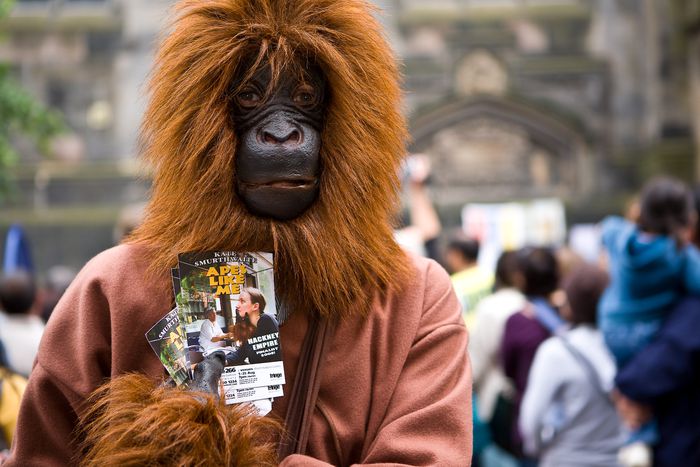
Edinburgh fringe festival 2011: the problem with passing around the hat
Published on
At first glance, Edinburgh’s Royal Mile in August seems like an anarchic, free-spirited display of all that the world’s largest arts festival has to offer.
But after a while you notice how rigidly the twirling street performers stick to their allocated spots, the hard-faced hard selling in the ‘bucket speeches’ after each act and the ever-present banners advertising Richard Branson’s latest venture - a credit card firm
Indeed, the relationship between art and money is so tense that a few penis-shaped stickers provoked an almighty row this month. A Fringe comedian urged his audience to stick the genitalia on other acts’ posters to promote his show, an original act of marketing that promptly dissolved into legal threats and heated online arguments between comedy stars. The original comedian, a crude humour specialist with a rather offensive stage name, released an apology for the ‘big jolly jape’, liberally peppered with penile wordplay. ‘Comedians being humourless arseholes? Surely not,’ one young Scottish comedian told me. ‘This story reflects everything that’s wrong with the Fringe: the marketing costs, the debt, the cynical money-grabbing, everything.’ Admittedly, the stunt didn’t benefit the artist’s ticket sales though – he’s performing for free.
Once upon a festival
In short, the Fringe has an uneasy relationship with the locals, the growing corporate presence and the sheer amount of money it generates – around £75 million a year for Edinburgh and the surrounding area. Yet this tension isn’t new. The Fringe came into being when eight theatre companies turned up uninvited in 1948 to the inaugural Edinburgh international festival, which still exists to celebrate traditional ‘high culture’ with bombastic opera and orchestral performances. Yet, however alternative and experimental the performance, the Fringe has never really been guerrilla theatre. Those eight companies were lured to Edinburgh not by the desire to bring their experimental shows to Edinburgh locals, but to exploit the opportunity presented by the International Festival’s huge crowds.
While it has no jury to filter would-be performers, registration fees of over £300 have driven enough performers away in recent years for the Fringe to spawn its own fringe, based on pay-what-you-can principles. Run out of the Forest Café, a meeting-place for activists and environmentally-conscious tea-drinkers, acts are given free lodgings and performance space, but expected to help out where they can.

Locals versus performers
At the other end of the scale, five of the biggest venues went their own way to chase sponsorship deals under the banner of the Edinburgh comedy festival. While still (just about) part of the Fringe, the relationship has been strained. Some Fringe purists big the venues good riddance, arguing that comedy (which made up 35% of all shows at the last count) has been taking over the Fringe, smothering other art forms. One group typically left out of the art-world bunfights are Edinburgh locals. The city’s students may be drafted in to man the festival bars, but the builders renovating the city council offices on the Royal Mile exist in a separate world to the street performers. When they come into contact, both groups regard each other with mutual bemusement.
Edinburgh may be a fairly cosmopolitan city, but there can be a worrying dearth of Scottish accents among festival audiences. The big TV comics manage to draw a lot of locals, but the post-show chatter that follows many theatre performances feels strangely rootless, as if it could be any day of the year in any fashionable London theatre. However, one thing remains certain. Whatever the arguments about money, Edinburgh still combines high-quality, challenging theatre and comedy with some genuine crowd-pleasers. Audiences can go straight from a performance by the Belarus free theatre, a Minsk-based company of dissident actors persecuted by the secret police, to a big-name, big-capacity gig by up-and-coming British star Russell Kane, 21. Indeed, many Fringe-goers will do just that. We suggest that you check the Edinburgh review magazine Fest. It’s long-running feature ‘Perfect Day’ weaves the city and the shows into an ideal itinerary. Combine the two or you’ll miss out on the essence of the Fringe experience.
(Images: Main (cc) MrGiles/ Flickr; In text (cc) David McK Flit/ Flickr)



